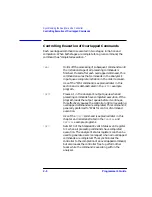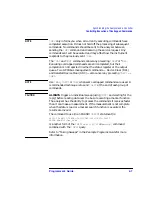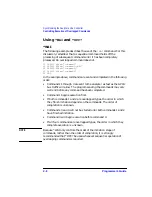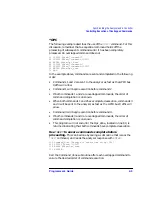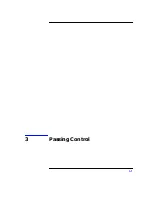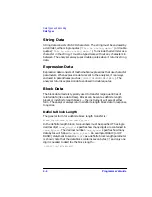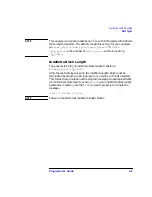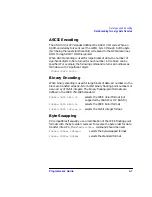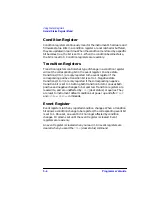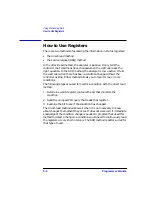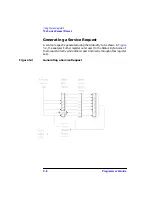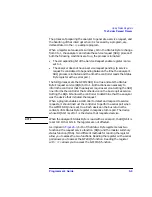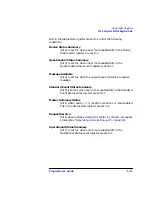
4-6
Programmer’s Guide
Data Types and Encoding
Data Encoding for Large Data Transfers
Data Encoding for Large Data Transfers
The
FORMat:DATA
command selects the type of data and the type of data
encoding that is used to transfer large blocks of numeric data between
the analyzer and a controller. There are two block specifiers and one
numeric data type specifier:
REAL
specifies the block data type. Either the definite or
indefinite length syntax can be used. The block is
transferred as a series of binary-encoded floating-point
numbers. Data transfers of the
REAL,64
data type are
demonstrated in the
REALDATA
example program.
INTeger
specifies the block data type. Either the definite or
indefinite length syntax can be used. The block is
transferred as an array of binary-encoded data with
each point represented by a set of four 16-bit integers.
This is the instrument's internal format — it should
only be used for data that will be returned to the
instrument for later use. Data transfers of the
INTeger 16
data type are demonstrated in the
INTDATA
and
LOADCALS
example programs.
ASCii
specifies the numeric data type (NR1, NR2 or NR3
syntax). The data is transferred as a series of
ASCII-encoded numbers separated by commas.
ASCii
formatted data transfers are demonstrated in the
ASCDATA
example program.
Blocks that contain mixed data — both numbers and ASCII characters
— ignore the setting of
FORMat:DATA
. These blocks always transfer as
either definite length or indefinite length block data. The following
commands transfer blocks of mixed data:
PROGram[:SELected]:DEFine
SYSTem:SET
CAUTION
INTeger 16 data for the Agilent 8711/12/13/14/ A-, B-, and C-series
instruments is represented by sets of three 16-bit integers. The
Agilent 8712ET/ES and 8714ET/ES instruments use sets of four 16-bit
integers.
Summary of Contents for 8712ES
Page 11: ...1 1 1 Introduction to GPIB Programming ...
Page 27: ...2 1 2 Synchronizing the Analyzer and a Controller ...
Page 36: ...3 1 3 Passing Control ...
Page 39: ...4 1 4 Data Types and Encoding ...
Page 46: ...5 1 5 Using Status Registers ...
Page 71: ...6 1 6 Trace Data Transfers ...
Page 98: ...6 28 Programmer sGuide Trace Data Transfers Internal Measurement Arrays ...
Page 99: ...7 1 7 Using Graphics ...
Page 105: ...8 1 8 Front Panel Keycodes ...
Page 111: ...9 1 9 Introduction to SCPI ...
Page 129: ...10 1 10 Menu Map with SCPI Commands ...
Page 268: ...12 1 12 SCPI Conformance Information ...
Page 290: ...13 1 13 SCPI Error Messages ...



